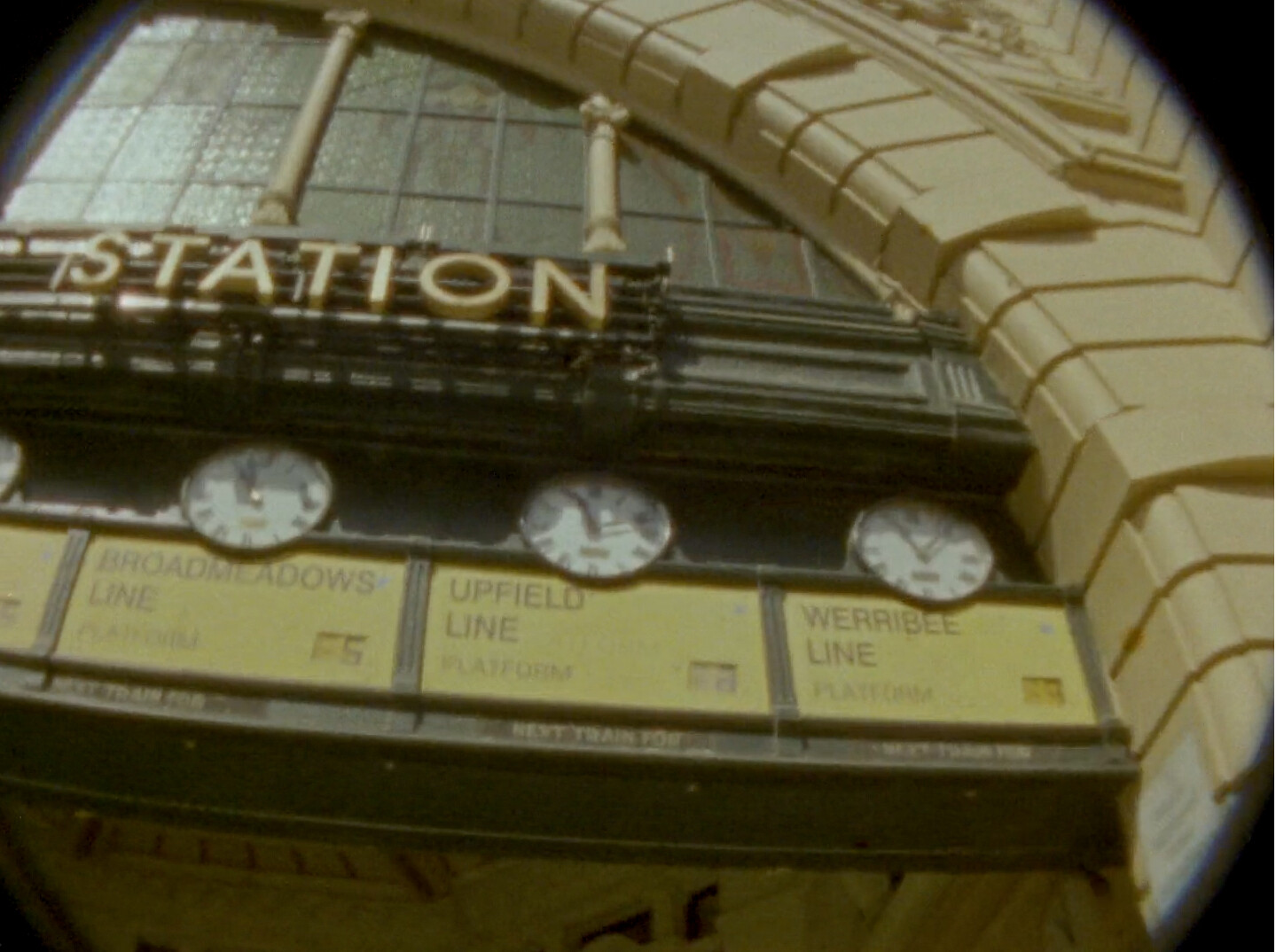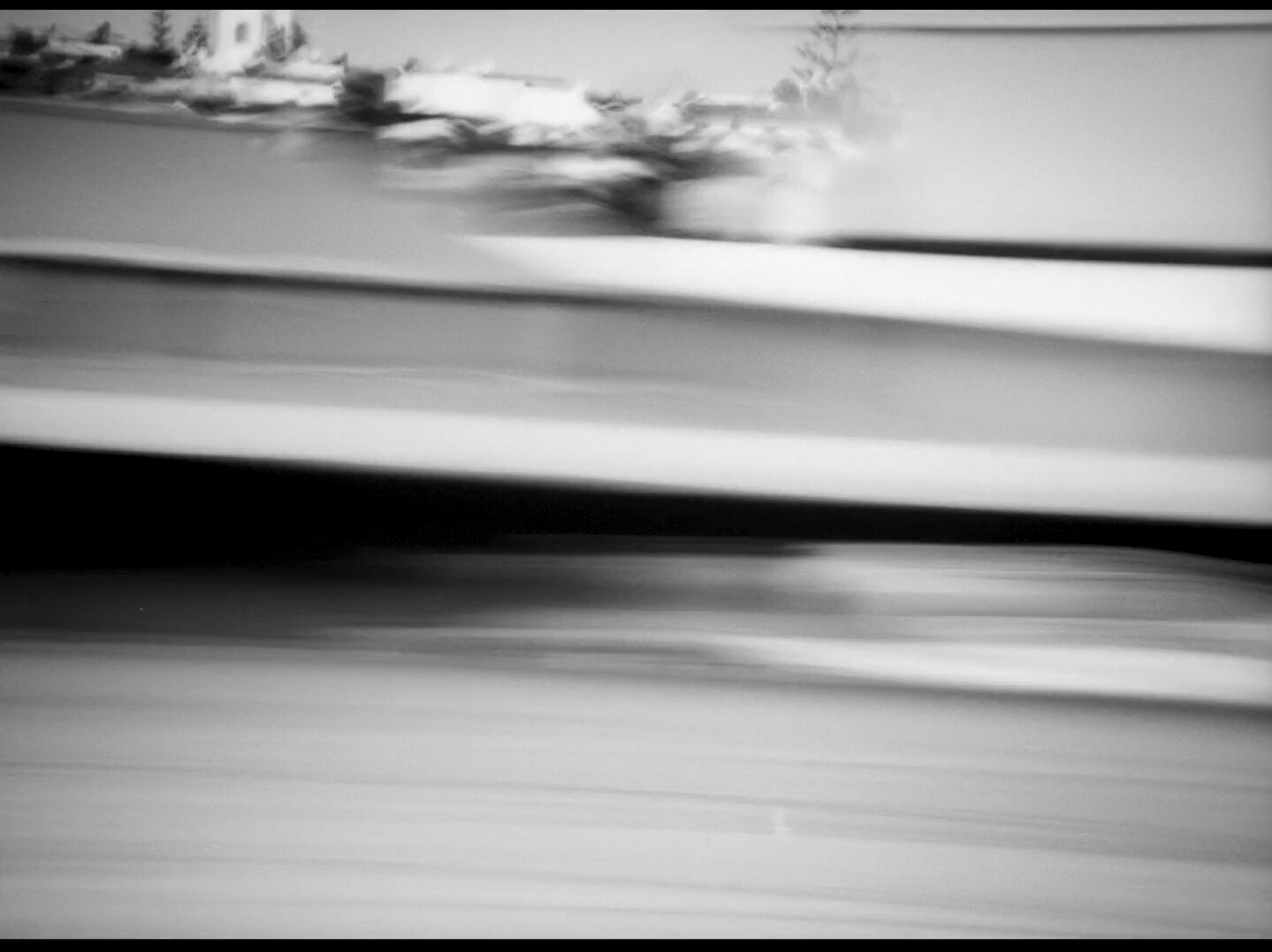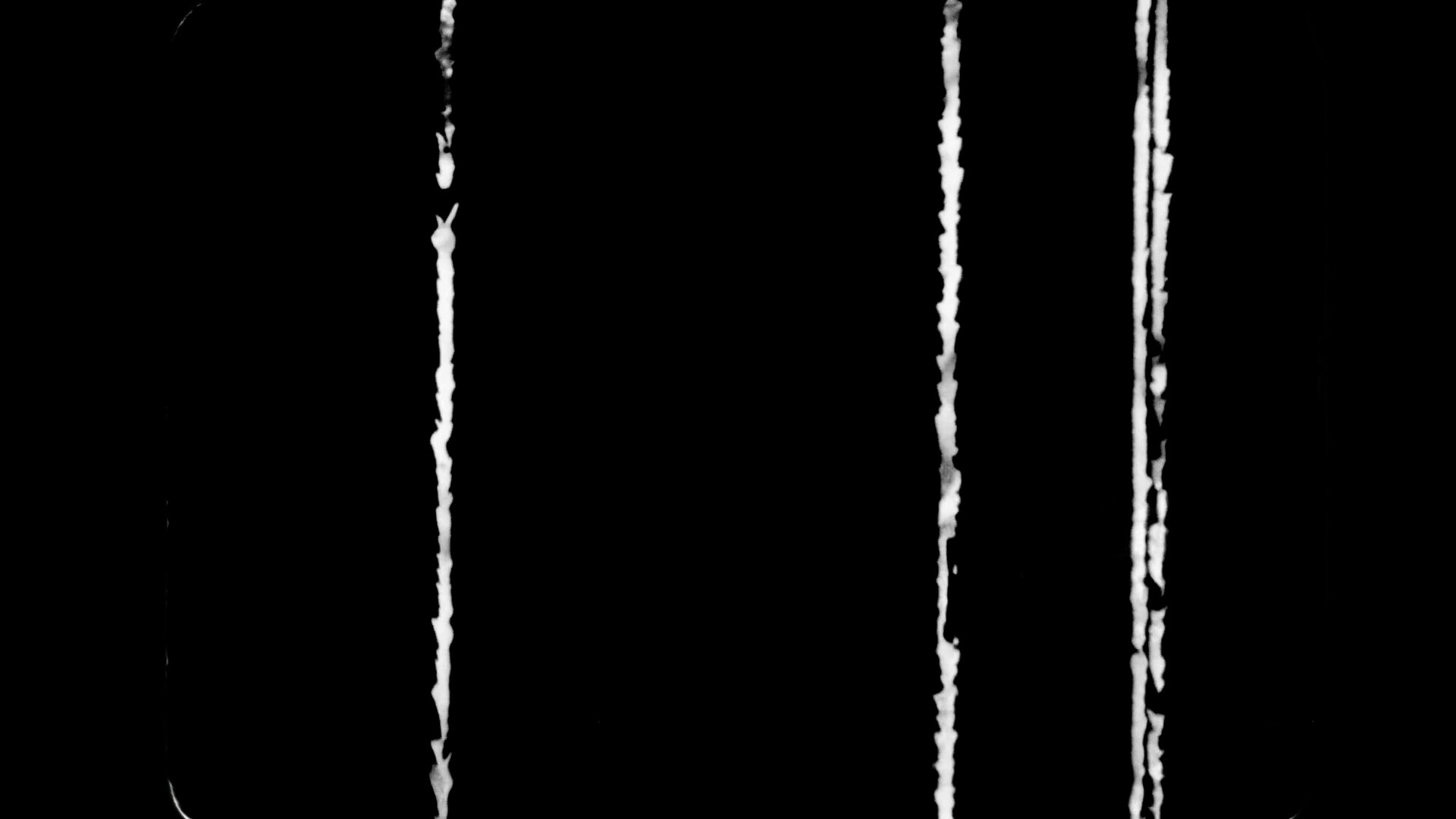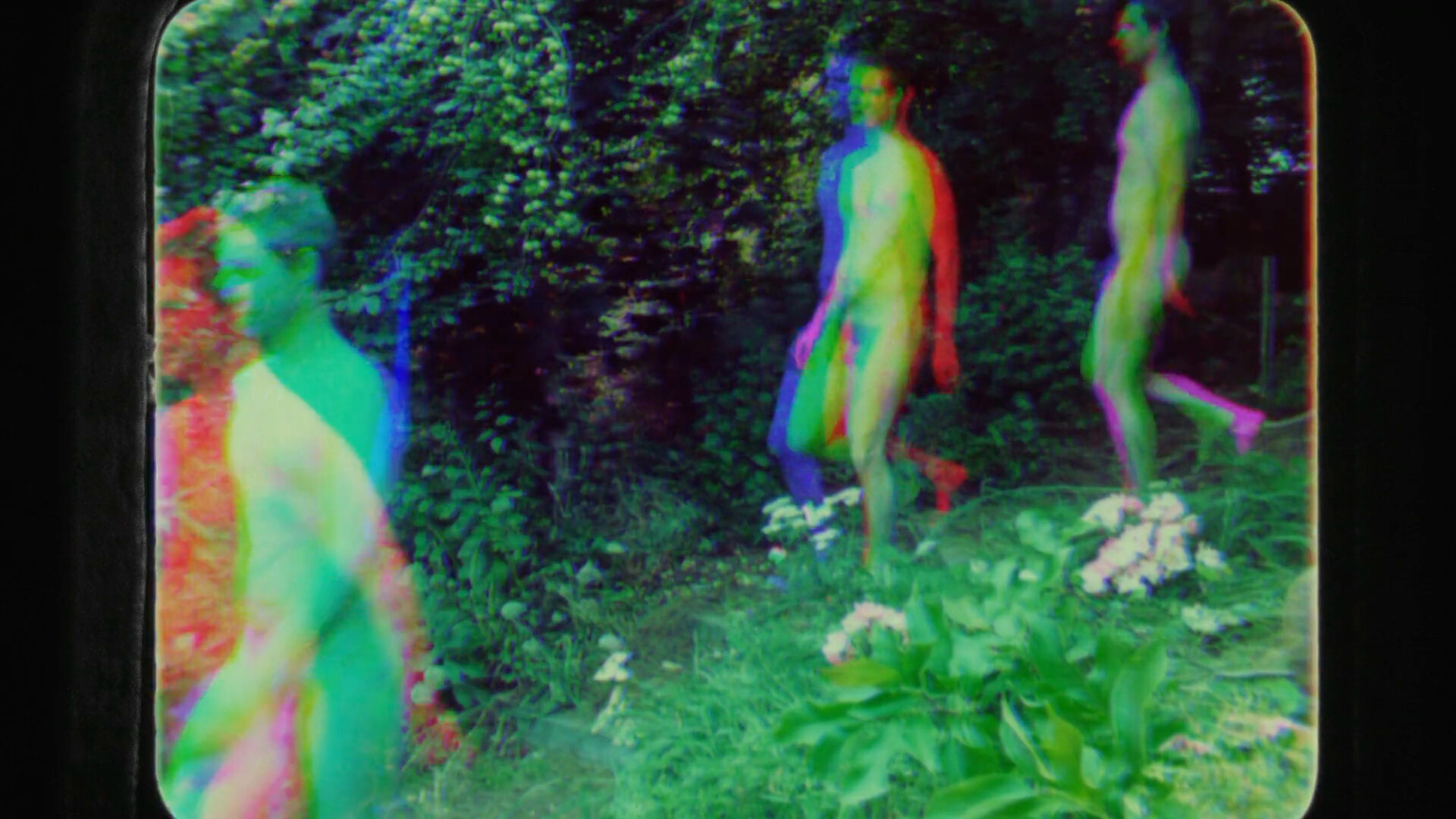Richard Tuohy, Tooborac, 2025, 16mm, Melbourne. Courtesy of Artist Film Workshop.
ART+FILM: Artist Film Workshop
Nica Nervegna-Reed
Many celluloid prints linger on the verge of disappearance, tucked away in dark storage rooms, decaying in their metal cannisters. The Artist Film Workshop (AFW) is an artist-run collective that operates out of a lab in Brunswick, Melbourne. The filmmakers there specialise in producing 16mm and 8mm film prints, and last Monday night they held a sold-out screening of a selection of new work at the Australian Centre for the Moving Image (ACMI). Although digitisation is viewed as the solution, the AFW suggest something of value is lost in the process.
In 2012, during the cinema industry’s switch to digital, the majority of analogue film labs were going out of business. Australian experimental filmmakers Richard Tuohy and Dianna Barrie decided to build a community devoted to reinvigorating and sustaining celluloid processes and skills. One hundred years earlier, the advent of 16mm had helped to cultivate an avant-garde and experimental approach to cinema. Its size rendered it cost-effective for artists, while the lightness of cameras like the Bolex enabled individuals to take the risk of unconventional shots. The portability of the projectors uncoupled artists from reliance on dominant theatres and facilitated the emergence of filmmaker-run and underground cinemas. This led to the emergence of styles like cinema verité (literally a cinema of truth), with its fly-on-the-wall style, and eventually the French New Wave, that appeared closer to our reality than the highly glamorised manicured Hollywood pictures. Small-gauge film, like 16mm, is by its nature a medium that is fundamentally suspicious of the Hollywoodification of cinema. The AFW seem cautious of being captured by monetised institutional control. Like its 1960s-70s predecessor, lovingly known as the Carlton Ripple, the AFW maintains a healthy scepticism that is typical of the hand-held medium, relying solely on community support.

Paddy Hay, Upfield, 2025, 16mm, Melbourne. Courtesy of Artist Film Workshop.
The screening was a part of ACMI’s annual artist-focussed program, Art+Film. It exhibited eight films, produced from their lab in Melbourne, allowing viewers to experience hand-developed film, projected on screen. Each artist introduced their film at the front of the auditorium. The countdown leaders were purposefully exposed, an unusual measure for projectionists. The 16mm prints had a granular appearance, a symptom of all celluloid, appearing like a light layer of sand dispersed across the screen. The light-sensitive emulsion of film is closer to our retinal vision than the pixels of digital imagery. Celluloid prints generate an interdependent bodily relationship, which exists beyond the surface of the image and screen. It encourages a tactile form of vision, where the eye becomes what film theorist Laura Marks describes as the “organ of touch.” Each of the films contain traces of the artist, as the scratches, dust debris, fingerprints accumulate and become embedded into the surface and structure of the film. This was apparent in Jordan James Kaye’s Debil Debil Baldwin Spencer (2025), where the scratches become a mesmerising sequence. These remnants index the presence of a human behind the image/ camera, a presence that is often eradicated in digital forms of cinema. Celluloid scratches become personified shadows of the maker, their labour and their past presence trapped with the image’s frame.
An element of fetishism tends to accompany practices that revive obsolescent technology. The rarity of the material is bound with a utopian ideal of the past. Perhaps this is a longing for a better system than the present, or a glorification of the intensive labour that these technologies demand. Still, the glossy smooth surface that digital images have, structured by a static frame, is equally fetishised. Digital images are always in focus, stable and fixed; we indulge in their clarity, a complete pure visibility of the image. Grounded in a Renaissance delineation of space, they assert the clarity of the image as a signifier of the good, through its verisimilitude to reality.
In a world awash with digital imagery, it is refreshing to see worn-out, poor-quality images. They are more tactile and exhibit their own unique personalities. Ursula Wood’s Relâche (2025) is influenced by the 1924 film Entr’acte by René Clair (with entr’acte translating to intermission). Wood takes us back to early surrealist cinema, where jump-cuts and montage reflects Paris in post-war disarray. At its emergence as a new art form in the early twentieth century, Kiev-born avant-garde artist Kazimir Malevich argued that cinema must develop its own formal language rooted in a kinetic relationship to movement, rhythm, and speed. AFW’s films mark an attempt at continuing to develop this language, demonstrating a use of kinetic processes to construct the narrative, beyond the limits of the teleological narratives of feature films. Paddy Hay’s Upfield (2025), for instance, jarringly splices split-second shots of Melbourne CBD skyrises with suburbia, producing a mechanistic vibration that’s felt as much as it’s seen as he walks the Upfield train line. Similarly, Richard Tuohy’s Tooborac (2025) is almost nauseating for viewers in the cinema, driven as it is by a perpetual circular motion that rapidly rotates around gigantic granite boulders.

Sebastian Vaccaris, Seagull Dog Child, 2025, 16mm, Melbourne. Courtesy of Artist Film Workshop.
Sebastian Vaccaris’s Seagull Dog Child (2025) is an exceedingly fast-paced film that captures a train-window view of Morocco, onto the streets of a medina. The hand-held shots and the shakiness of the camera sculpt these fast movements into visual fragments, fracturing and blurring the image into gradients of black and white chiaroscuro. The darkness and lightness of the image blend to form blurred abstracted horizontal lines. This horizontal gaze is emphasised and almost obliterated, as Vaccaris builds tension through the incessant zoom, freeze frames, and fast swipes that evoke the fast-forwarding, reversal, and pausing of a film. The images of arid landscapes and desolated buildings in Seagull Dog Child seem to shift in and out of frame. The rhythmic, optical sensation that they convey destabilises the image by its unsteady framing and perpetual movement.
Part of the allure of celluloid is the flicker of light that pulsates and sustains the image’s presence during projection. The shutter blade exposes the image in quick flashes, moving at twenty-four frames per second. Tony Conrad’s The Flicker (1965) exposed the hypnotic tendencies of celluloid film, as it purely consists of black and white frames captured at various shutter speeds. Conrad’s film reveals how the mechanics of the cinematic apparatus inherently induce a state of hypnosis. The flickering sensation generates a perpetual state of still motion, the illusion of movement within a static frame. The pulsating light reflects its eventual decay. Equally, the materiality of the emulsions that structure and carry these celluloid images parallels the impermanence of life: just as memory fades and weakens over time, the emulsion on the prints disintegrates and demagnetises.

Dianna Barrie, Nude Descending, 2025, 16mm, Melbourne. Courtesy of Artist Film Workshop.
Dianna Barrie’s Nude Descending (2025) utilises analogue methods to position celluloid, a medium of the past, in relation to the future, releasing it from nostalgia. Nude Descending is a rhythmic scan of a naked body that perpetually descends into a garden, framed through vertical slithers that gradually reveal the naked body. They initially appear as thin, fuzzy lines, which vibrate and radiate against the darkness of the frame. Etched into the negative, they create a jittery appearance that stutters horizontally across the screen. The sequence was filmed at various rates of frames per second, including twelve, twenty-four and forty-eight, creating an arrhythmic pattern whereby the body is in a perpetual loop, crossing over and doubling against itself. The variable frame rate also means that the lines follow the various pulses, and impersonate human behaviours. Some lines move across the screen in a hurry, while others lag behind the rest. Barrie structures the optical illusion to mimic the naked figure, and for the figure to slowly embody the wavering line.

Dianna Barrie, Nude Descending, 2025, 16mm, Melbourne. Courtesy of Artist Film Workshop.
Whether or not the reference to digital transmissions is conscious, the fuzzy lines in Barrie’s work appear as electronic currents that zap through the image, like the scan lines in a cathode ray tube television. The stripes are later filtered through RGB colour planes that slowly shift across the screen, fusing together and colliding against each other. In some moments the red and blue collide, shifting the image towards the retro effect of an anaglyph, rendering the flat image three-dimensional. In another moment the frame is fully exposed, showing a green lush garden vista as the RGB colours slowly vacillate across the frame. Barrie plays with the flatness of the celluloid image, and more broadly speaks to the inevitability of digital technologies, so too becoming obsolete. In Leslie Thornton’s Fred and Peggy in Hell (1984) two children sift through incandescent light bulbs, old phone cables, and other technological debris. They wander through these technological ruins and seem to speak in tongues, as a consequence of being raised by televisions. Thornton shot Fred and Peggy in Hell on 16mm due to cold war fears of digital tampering. The images have a heightened graininess and roughness to their surface, as they were shot on black and white reversal 16mm film stock. Thornton deliberately utilised this film stock as it was necessary for the images to appear archival, despite their portrayal of an apocalyptic future.
The AFW cultivates an important revival of experimental celluloid imagery, realising a potential for resistance against this bleak inevitably. The collective is dedicated to ensuring that these celluloid techniques are not lost, but instead passed along to the new wave of young devotees that packed out the auditorium at ACMI. Perhaps an element of nostalgia is necessary for celluloid to realise its expansive potential.
Nica Nervegna-Reed is an artist and writer.